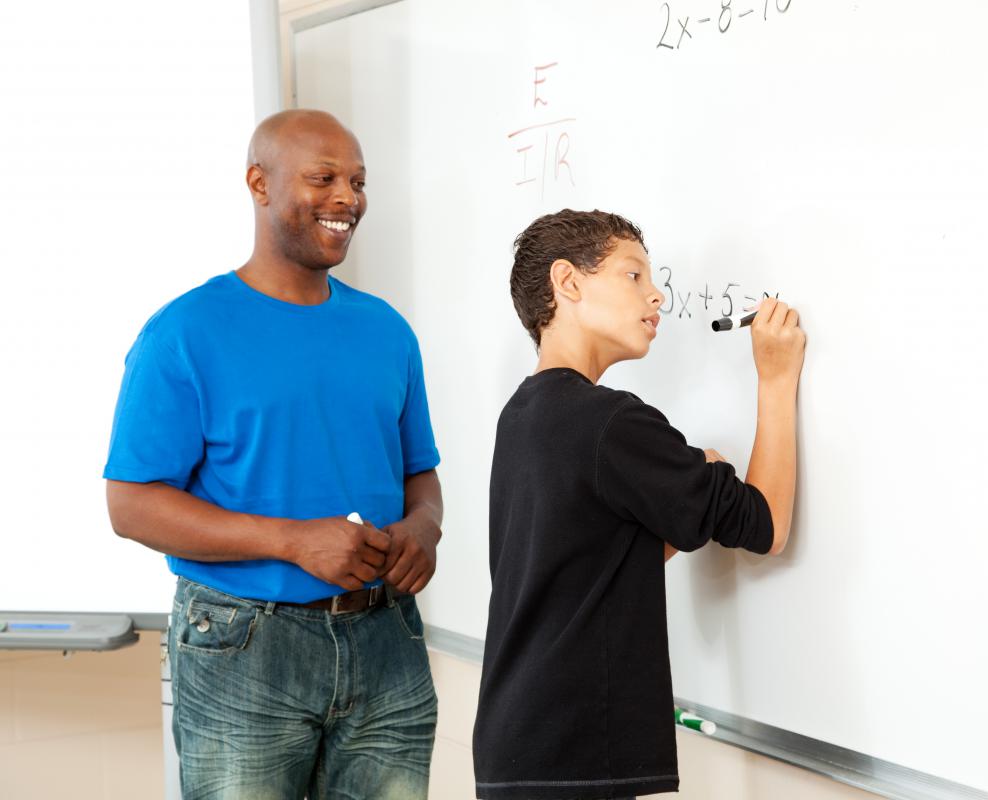At PracticalAdultInsights, we're committed to delivering accurate, trustworthy information. Our expert-authored content is rigorously fact-checked and sourced from credible authorities. Discover how we uphold the highest standards in providing you with reliable knowledge.
What Are the Different Types of Active Learning Activities?
There are many different types of active learning activities, which require students to take a dynamic and energetic role in their education. Active learning places greater responsibility on students than traditional and more passive educational assignments do. Some types of active learning activities, which are based on hands-on assignments and activity-based learning, include reenacting historical events, observing insects in their natural habitats, solving math problems in a group using manipulatives, and creating a presentation about a work of fiction or nonfiction. The point of many of these educational activities is for students to learn more by becoming actively involved with the learning objectives for which they are responsible based on the idea that the more they are required to interact with the information, the more deeply they think through it and learn it.
In social studies classes, active learning activities often include reenacting historical events and holding debates. Students given an assignment to reenact historical events might have to read primary and secondary documents from history and contemporary accounts of an event, synthesize that information, and then write and act out the event in a group setting. After groups have acted out their interpretations of an event, the class then may analyze the event more closely and also could debate in teams about controversial issues or positions relating to the historical event.

Teachers of science classes might have students participate in active learning activities such as studying the characteristics of different insects and then observing these insects, their behavior, and the conditions in which they naturally live. A class could learn about ants, their living environment, the types of work they do, and the types of food they eat. They then could go into the woods, find ant colonies, and observe and record their findings in groups. These groups could then meet, finalize their observations in the forms of charts, drawings and narrative writing, and present their classmates with what they learned and the questions they still have. A follow-up activity could involve returning to the ant habitats for further observation and attempts to answer remaining questions about ant life.

Students in mathematics courses might engage in active learning activities such as taking a complex geometry problem, dividing into groups, and using manipulatives to solve the problem. The students might use the manipulatives — or plastic geometric shapes — their mathematics textbook, calculators and one another to come up with a viable solution to their problem. Once they solve their assigned problem, these students could present their work to the entire class. Such activities give students the opportunity to teach one another and can be more effective than simply listening to a lecture about how to solve a similar problem. Teachers act more as facilitators and coaches than leaders when they are overseeing active learning activities.

Language arts and English courses may allow students to actively learn and increase their reading comprehension and literary analysis skills by having them choose a challenging nonfiction or fiction book to read and complete a project on. The project could be multifaceted and include students reading carefully, writing journal entries, answering essay questions, creating an in-depth model or detailed visual about the book, and then developing a presentation for the class. Students could present their visual and information about the book and how it related to them before answering questions from their teacher and classmates about it.
AS FEATURED ON:
AS FEATURED ON:















Discuss this Article
Post your comments